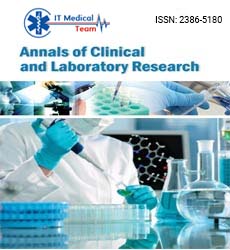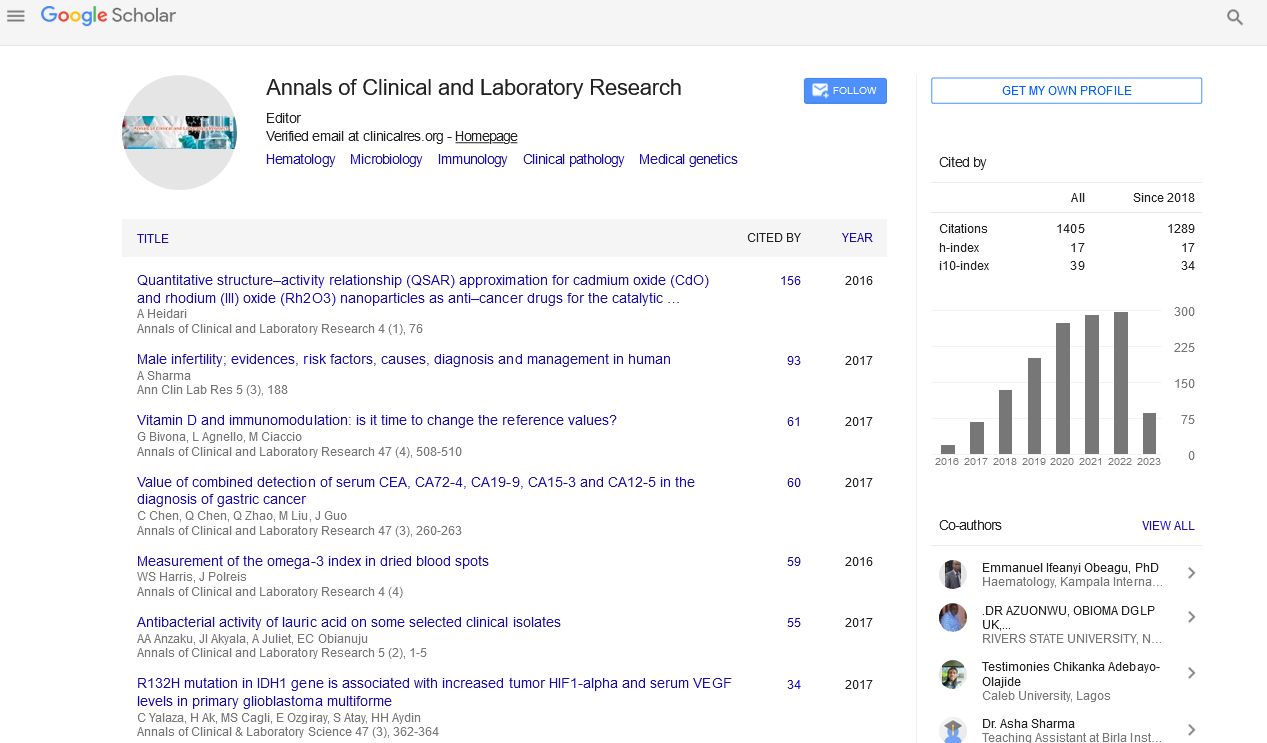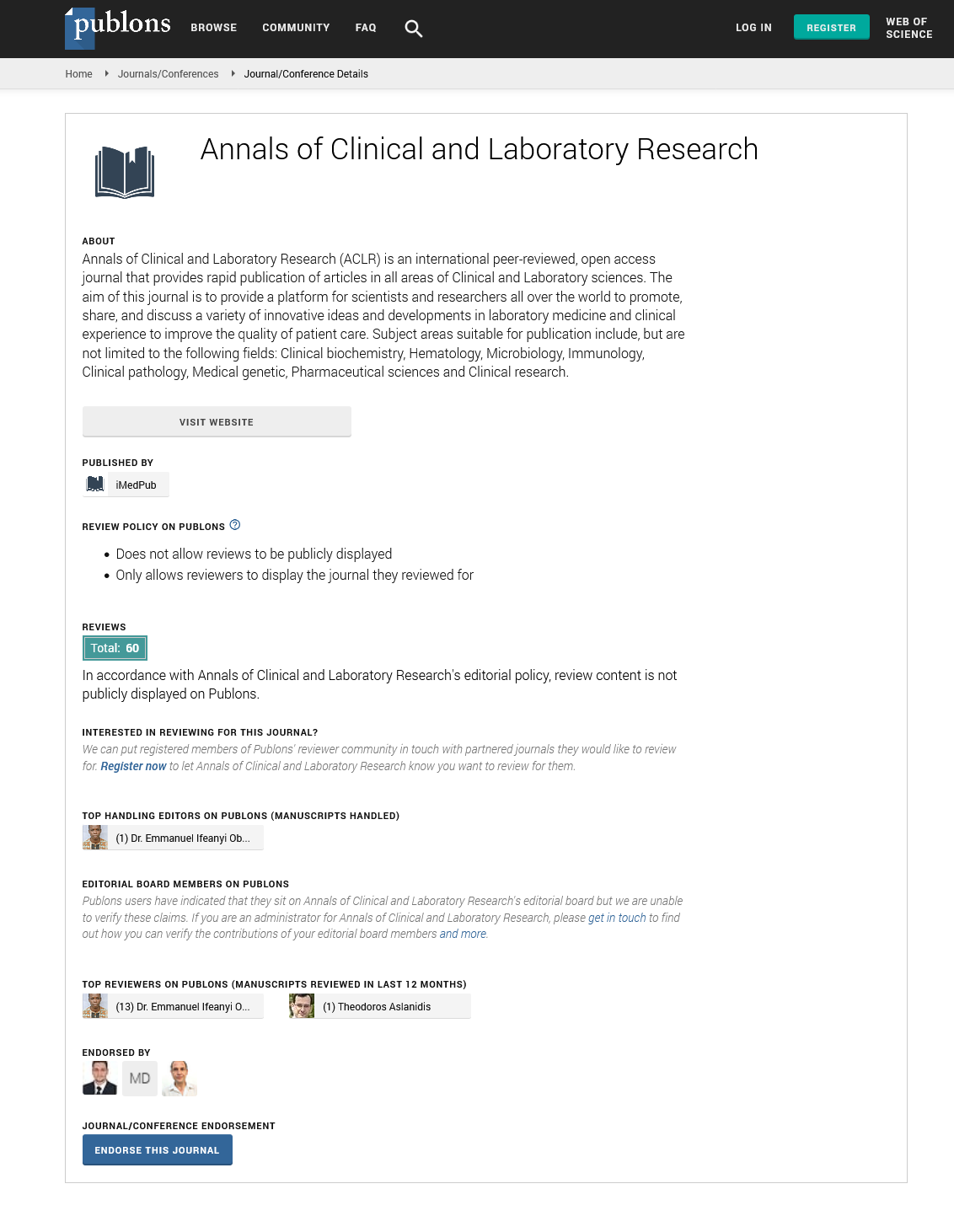Rapid Communication - (2023) Volume 11, Issue 4
Quality Assurance and Quality Control in High-Level Biosafety Laboratory Operations
Padma Karsten*
Department of Biomass Science and Engineering, University of Sichuan, Chengdu, China
*Correspondence:
Padma Karsten, Department of Biomass Science and Engineering,
University of Sichuan, Chengdu,
China,
Email:
Published:
25-Jul-2023, DOI: 10.36648/2386- 5180.23.11.475
Introduction
High-level biosafety laboratories, such as Biosafety Level 3 (BSL-
3) and Biosafety Level 4 (BSL-4) facilities play a critical role in
conducting research and diagnostic activities on dangerous
pathogens. Ensuring the safety and accuracy of operations
within these laboratories is paramount. Quality Assurance (QA)
and Quality Control (QC) practices are essential components of
maintaining operational excellence and mitigating risks associated
with hazardous agents. This article explores the significance of QA
and QC in high-level biosafety laboratory operations, highlighting
their roles, principles and implementation strategies. Quality
assurance encompasses all systematic activities that ensure
laboratories consistently meet established standards and guidelines.
In high-level biosafety laboratories, QA is vital for guaranteeing the
safety of personnel, maintaining the integrity of research results and
ensuring compliance with regulatory requirements [1].
Documented standard operating procedures (Sops): SOPs
provide detailed instructions for routine laboratory activities,
ensuring that procedures are conducted consistently, safely and
accurately. QA involves the development review and revision of
SOPs to reflect best practices and regulatory standards.
Training and competency: QA programs should emphasize
continuous training and competency assessment for laboratory
staff. Properly trained personnel are better equipped to handle
hazardous agents and adhere to safety protocols, reducing the
risk of accidents or errors.
Equipment calibration and maintenance: QA requires regular
calibration, maintenance and validation of laboratory equipment
and instruments to ensure accurate and reliable results.
This includes routine checks, performance verification and
documentation of any repairs or adjustments [2].
Facility and biosafety assessments: Regular inspections and
audits of laboratory facilities are essential to identify potential
hazards, assess compliance with biosafety guidelines and
implement corrective actions. QA programs should conduct
thorough assessments of facility infrastructure, waste
management and emergency response protocols.
Quality control involves the application of measures to monitor
and verify the accuracy and precision of laboratory tests and
procedures. In high-level biosafety laboratories, QC is crucial to ensure the reliability of diagnostic results and research outcomes.
Key elements of QC in these facilities include [3].
Internal quality control (Iqc): IQC involves the use of known
samples or controls to monitor the performance of laboratory
tests. These controls should mimic patient samples and be tested
alongside them to assess the accuracy and precision of the
assays. Results are compared to predefined acceptance criteria
and corrective actions are taken if deviations occur.
External quality assessment (EQA): EQA programs involve
participation in proficiency testing schemes organized by external
agencies. These programs provide an external validation of laboratory
performance by comparing results with other laboratories. EQA
helps identify systematic errors, assess inter-laboratory variability
and benchmark performance against established standards.
Data integrity and documentation: Quality control requires
accurate and complete documentation of all laboratory activities,
including sample handling, test results and quality control
records. Robust data management systems should be in place to
ensure traceability, prevent data manipulation and facilitate data
analysis and review [4, 5].
Conclusion
In high-level biosafety laboratories, QA and QC practices are
indispensable for maintaining operational excellence and
mitigating risks associated with hazardous pathogens. Through
the implementation of comprehensive QA programs, laboratories can ensure adherence to standard operating procedures,
personnel competency, equipment reliability and facility safety.
Simultaneously, robust QC measures, such as IQC, EQA and
diligent data management, enhance the accuracy and reliability
of diagnostic and research outcomes. By prioritizing QA and QC,
high-level biosafety laboratories can safeguard personnel safety,
protect public health and advance scientific knowledge in a
secure environment.
References
- CHEN J (2018). Milestone of the development of High-Level Pathogenic Microorganism Laboratory in China. J Clin Virol.9-11.
Indexed at, Google Scholar, Cross Ref
- Huigang LI, Zhiming YU (2020). Implement national high-level biosafety laboratory plan and improve biosafety platform assurance capacity. Chin Sci Bull.35(9):1116-22.
Indexed at, Google Scholar, Cross Ref
- Kwon S, Choi H. A Study on the Circulation System of Biosafety Level 4 Laboratory Facilities. J Archit Inst Korea. 17(1):23-32.
Indexed at, Google Scholar
- Wang QG, Ding F, Li SB, et al. Advance in environmental risk assessment of high level biosafety laboratory. Procedia Environ Sci. 13:1458-61.
Indexed at, Google Scholar, Cross Ref
- Zhang SQ, Liu SK, Jing W, Zheng WM (2021). Realization of Secure Mutual Authentication Testing for High-Level Biosafety Laboratory Management Software System. 67-74.
Indexed at, Google Scholar, Cross Ref
Citation: Karsten P (2023) Quality Assurance and Quality Control in High-Level Biosafety Laboratory Operations. Ann Clin Lab Res. Vol.11 No.4:475






